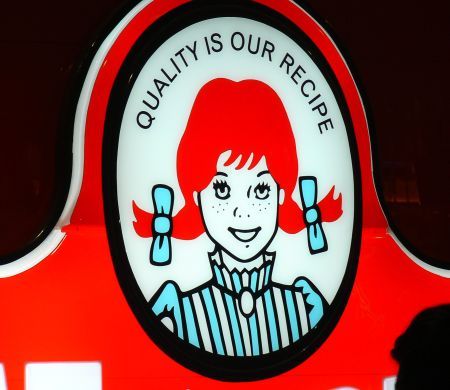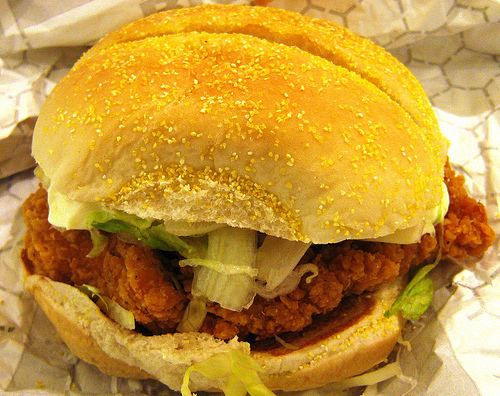Ten years to the month after the City of Toronto (that’s in Canada) launched its red-yellow-green restaurant inspection disclosure system, New York City issued a progress report on its 6-month-old A-B-C disclosure system and concludes – high-fives all around.
The New York City Department of Health and Mental Hygiene said that its new sanitation regime has significantly exceeded the department’s expectations. … Of the 10,000 restaurants that received grade cards during _story.jpg) the first six months under the new rules, 87 per cent had received either A or B grades, and 57 percent had received A’s.
the first six months under the new rules, 87 per cent had received either A or B grades, and 57 percent had received A’s.
Many restaurants improved upon their first scores, the department said. Among those scoring a B on the first inspection (a score of 14 to 27 violation points), close to 44 percent earned an A grade on the second inspection, the department said. And 72 percent of the restaurants that scored a C on the first inspection (the equivalent of 28 or more violation points) improved to an A or B grade.
Apparently the letter grades have captured public interest. The department said that its new restaurant-inspection Web site has received more than 40,000 page views each month, a fivefold increase over the previous year, and the previous Web site.
These results mirror almost exactly what has happened in Toronto over the past 10 years.
DineSafe is Toronto Public Health’s Food Premises Inspection and Disclosure system. Under this program, restaurants post colour-coded inspection results at the front entrances of restaurants and results are also posted on a searchable website. The DineSafe website now lists 14,755 food establishments, and diners can easily and quickly check the inspection status of any location on the site.
“In the past 10 years, DineSafe has increased the transparency of the restaurant inspection process and led to a significant improvement in food safety,” said Medical Officer of Health Dr. David McKeown. “I am proud of the program, and congratulate our public health inspectors and restaurant owners and operators who work together every day to make our food safer.”
Prior to the implementation of DineSafe, less than 50 per cent of restaurants passed their first inspection. After the first year of the program, 78 per cent of the premises inspected received a green pass, and compliance with all food safety regulations has now risen to 91 per cent.
“DineSafe has increased the efficiency of the system as the vast majority of restaurants pass their first inspection without the need for a re-inspection, meaning our inspectors can now visit more places,” said Dr. McKeown. Any (1)(1).jpg) premise that receives a yellow conditional pass is re-inspected within 48 hours. Depending on the type of operation, each premise requires between one and three mandatory inspections a year.
premise that receives a yellow conditional pass is re-inspected within 48 hours. Depending on the type of operation, each premise requires between one and three mandatory inspections a year.
In 2006, the City further strengthened food safety in Toronto by passing a Food Handler Training bylaw that ensures every restaurant has a certified food handler on site at all times. To date, TPH has certified 38,331 employees on safe food handling practices.
Abstract
??The World Health Organization estimates that up to 30% of individuals in developed countries become ill from food or water each year. Up to 70% of these illnesses are estimated to be linked to food prepared at foodservice establishments. Consumer confidence in the safety of food prepared in restaurants is fragile, varying significantly from year to year, with many consumers attributing foodborne illness to foodservice. One of the key drivers of restaurant choice is consumer perception of the hygiene of a restaurant. Restaurant hygiene information is something consumers desire, and when available, may use to make dining decisions.

.jpg) clear.
clear. who consumed food purchased at this restaurant between July 26 and August 6 may have been exposed to the hepatitis A virus. The risk of getting the infection is very low.
who consumed food purchased at this restaurant between July 26 and August 6 may have been exposed to the hepatitis A virus. The risk of getting the infection is very low..story.jpg)
(1).jpg) boroughs.
boroughs.(1).jpg) "If you don’t have hand towels in your restroom that’s points off. We don’t like it but we’ve learned to live with it."
"If you don’t have hand towels in your restroom that’s points off. We don’t like it but we’ve learned to live with it." Although Canada’s track record with ridiculous things said involving listeria is hard to match.
Although Canada’s track record with ridiculous things said involving listeria is hard to match..jpg) (Canada), riffing on Tim Hortons donuts.
(Canada), riffing on Tim Hortons donuts.
 been.
been..jpg) But all I take away from reading all the blogs is this pic: dude, get your butt off the food prep area.
But all I take away from reading all the blogs is this pic: dude, get your butt off the food prep area..jpg) It’s a standard story that is being repeated in countries across North America: what restaurants in a region get lousy (and occasionally disgusting) inspections, and what is the best way to make those results available to the public?
It’s a standard story that is being repeated in countries across North America: what restaurants in a region get lousy (and occasionally disgusting) inspections, and what is the best way to make those results available to the public? .jpg) “Letter grades are nothing more than a scarlet letter that will keep people from eating out.”
“Letter grades are nothing more than a scarlet letter that will keep people from eating out.” .jpg) Chef/co-owner Donna Dooher of Mildred’s Temple Kitchen said,
Chef/co-owner Donna Dooher of Mildred’s Temple Kitchen said,  Appropriately enough the sandwich was the Big Crunch.
Appropriately enough the sandwich was the Big Crunch.